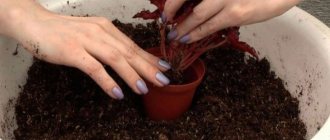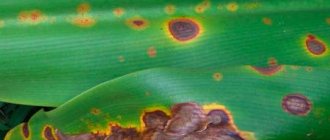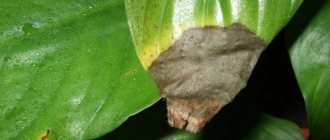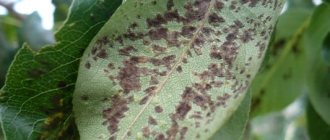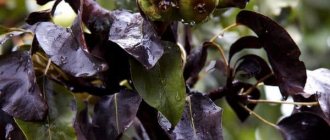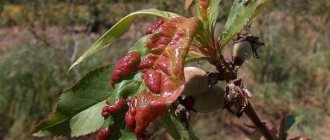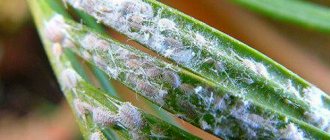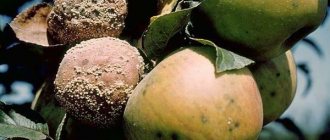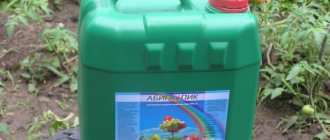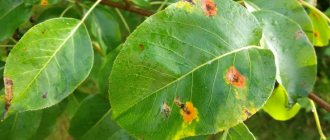Types of pests of indoor plants and methods of combating them
To grow indoor flowers, you need to be familiar with the basic rules of caring for them.
Some plants require minimal attention, others (rare or tropical specimens) are very capricious. The slightest mistake leads to their death or loss of their presentable appearance. First of all, the gardener must know how to get rid of pests. There are quite a lot of types of them. Appear on house flowers: aphids, thrips, scale insects, false scale insects, spider mites, mealybugs, fungus gnats, root mites.
The simplest and most common pest is aphids. It comes with or without wings. Individuals are egg-shaped. Dangerous due to rapid reproduction. They don't have to have a female nearby. Most often, “clones” simply appear. In terms of species, pests are very diverse; they can be yellowish or even black.
Aphids are capable of sucking sap from a plant. At the same time, the pests release poison. After the toxin gets on the leaves, they become twisted and deformed. After some time they die off. The tops of the plant become twisted. The shoots stop growing.
The waste products of aphids (aphids) heavily contaminate the leaf blades of flowers. As a result, the normal functioning of crops is disrupted.
Aphids are carriers of various viruses. They are transmitted through the pest's saliva. Infection causes enormous damage to plants.
It is very easy to notice signs of damage on plants. Pests settle in large colonies, most often on the fleshy, juicy and most tender parts of the plant. They leave behind a residue. If there are a lot of aphids, then their larvae can make the plant weak and dilapidated.
If pests are detected, it is best to bathe the plant in the shower and then spray it with a special preparation designed to combat aphids. A week later, for prevention, the plant is treated again.
Thrips are found almost every day. If you pick up an onion and remove the top husk, you can see the second layer. If it is sticky and unpleasant to the touch, and has a silvery tint, then the harmful effects of thrips are observed.
Noticing pests on a plant is not so easy. Its features are:
- elongated body (dimensions can be up to five millimeters);
- unremarkable color (can be black, gray or brown).
Thrips are omnivores. They can devour with appetite both a delicate rose and a prickly cactus. Plant tissue damaged by pests dies. In its place, black dots and large holes form. The leaves fall and wither. The plant loses its presentable appearance.
As a preventative measure you should:
- humidify the air in the room (this type of pest does not like moisture);
- inspect the leaves both on the underside and on the surface;
- Give flowers showers from time to time.
After getting rid of the problem, the flowers are treated with a systemic fungicide. This type of pest is capable of transferring diseases from one plant to another.
There are many varieties of scale insects. They feed on any crops. Once on the plant, they begin to secrete a sticky liquid on which the sooty fungus can settle.
The body of an adult insect has a hard waxy shield. This feature of the pest makes it resistant to the effects of drugs, so spraying does not always help. Young individuals do not have such protection; it is a little easier to deal with them.
Individuals (regardless of age) cause serious damage to the plant. They feed on its juice. Even poisonous crops are susceptible to their attack.
After the pest appears, the young shoots of the plant begin to dry out. After this, the flower stops sprouting new shoots. It pours and the stems turn yellow and then fall off. If you do not get rid of the scale insects at this stage, you may lose the plant.
For prevention, you should spray the plants and ventilate the room. If possible, you need to cut off the affected part of the flower. Specialized stores sell drugs designed to kill this type of insect. Inspection should be done every few days.
Spider mites appear unexpectedly. It is almost impossible to notice it until the plant itself shows that it is sick - spots will appear on the leaves.
At the first sign of a pest, white dots can be seen on the back of the leaves. After this, the leaves dry out, may turn yellow, and the buds become deformed.
How active a tick will be directly depends on the temperature in the room. The higher she is, the more he likes it. If the conditions for the pest are not very suitable, then the females may begin to hide in the soil, under fallen leaves, or in potted cracks.
When caring for plants, it is better to collect fallen leaves, wipe them with a damp sponge, or bathe the flowers in warm water. The surest way to fight is to spray with a solution of effective drugs that can be found in pharmacies or in specialized stores. It is best to use several types of poisons. Such ticks adapt to them very quickly, and after a while they are not afraid of them.
Mealybug is another pest of indoor plants that belongs to the sucking insects. The length of the individual reaches three and a half millimeters. It has an oval-shaped body with growths, whitish or pinkish in color. Such a pest can settle either in the axils of the leaves or on the stem itself.
The insect has only one pair of wings. Its larvae are able to penetrate the roots of plants. Scale insects protect laid eggs with secretions that have a cotton-like structure.
Mealybugs pierce the leaves and buds of the plant, and then suck out its juice. They do this until the crop dries out. Young insects cause particular harm. This is explained by their mobility and the need for nutrients necessary for active growth. Those plants that have the misfortune of being attacked by pests shed their leaves. Their shoots begin to lag behind in development and growth.
During puberty, males' oral apparatus atrophies. They stop drinking the juices of the plant.
Scale insects secrete a liquid that promotes the development of sooty fungus. You can fight the pest manually, armed with a cotton swab. With its help, adults are removed. After this, you should carry out the procedure of spraying with preparations that will help destroy small specimens.
Diseases and pests of indoor flowers: causes and control measures
Of course, indoor plants are less likely to suffer from diseases and pests than their garden relatives, since they are usually under more careful attention.
But if house flowers are nevertheless damaged by insects or become infected, it is much more difficult to treat them, because “green pets” are more pampered and capricious, and react worse to outside interference and, especially, to the use of chemicals.
The wrong location (too dark, too sunny, too cold, too warm, low humidity) as well as improper care (too much water, not enough moisture, wrong fertilizer, wrong substrate) can cause poor plant health. Unskilled care also contributes to the damage of indoor flowers by pests and diseases; the plants refuse to bloom, wither, and ultimately die.
As they say, you need to know your enemies by sight. Therefore, read the photos and names of diseases and pests of indoor plants, learn about the causes of damage and how to get rid of these insects and infections.
Diseases of indoor flowers: photos, causes and methods of control
In this section of the article you will learn how to deal with some diseases of indoor plants and you will be able to see what the symptoms of damage look like.
Brown edges of leaves
Causes: excess or lack of water, excess fertilizer, soil that has lost its suitability, dry air.
Control measures: optimize care, increase air humidity.
curled leaves
Reasons: low air humidity, dry soil. Root damage can also cause this plant disease.
Control measures: optimize care, replant if necessary.
Pale leaves (chlorosis)
In plants that prefer acidic soil, such as azalea and milkweed. The leaf veins are still green.
Causes: hard water, iron deficiency.
Control measures: soften the water, add an iron supplement to the water.
Light spots on leaves
Reasons: temperature changes, too cold or too warm water. Moisturizing in the sun (for example, in the Usambara violet).
Control measures: change location, optimize care, water from below.
Powdery mildew
Symptoms: A white to dirty brown powdery coating on both sides of the leaves.
Causes: fungal spores.
As you can see in the photo, you can fight this disease of indoor plants using fungicides:
Control measures: for prevention, spray with horsetail infusion. Remove diseased leaves.
Gray mold
Symptoms: gray-brown coating on leaves, petioles or flowers.
Causes: unsuitable for spraying or cold water, too high air humidity.
Control measures: remove diseased parts of the plant, reduce air humidity, place in a brighter place.
Bacteria and viruses
Bacterial wet rot occurs in alpine violets and indoor callas.
Symptoms: rot at the base of the stem.
As shown in the photo, with this disease of indoor flowers, if there is no proper treatment, rot spreads throughout the entire plant:
Control measures: None.
Mosaic virus
It primarily affects anthurium, orchids, hydrangeas, gloxinia, and hippeastrum.
Symptoms: light green and dark green spots.
Control measures: None.
Kidney failure is most often caused by an imbalance of water balance. Either the plant was experiencing a lack of moisture, or as a result of excessive watering, the roots were so damaged that they could not absorb and transport enough moisture.
Some plants, such as gardenia, stephanotis or camellia, shed buds even when their location changes dramatically. Premature shedding of flowers is also a consequence of changing the place of growth and is especially evident when the plant is not hardened enough.
Inactive flowering may be due to genetic factors (some varieties bloom less than others) or a lack of phosphorus, violation of the dormant period, or improper wintering. Cracked pedicels are considered a consequence of irregular watering.
This can lead to tension in the tissues and rupture of the shoots. Rotting flowers or buds indicate gray mold infection.
These photos show the symptoms of some diseases of indoor plants:
Pests of indoor plants: photos, causes and control measures
The most favorable time for pests of indoor flowers is considered to be the end of the heating season. Lack of light and dry air in a heated room expose plants to the risk of pest damage.
During this period, spider mites and aphids appear especially often on plants. Summer and fall are whitefly season. The best prevention is care that meets the needs of plants. Choose the most suitable locations.
In addition, you should devote more time to observing plants.
First of all, pay attention to the underside of the leaves. In this case, it is often possible to detect a disease or pests in the initial stages of damage. Sick plants should be isolated to avoid spreading the infection to other plants.
Spider mites
Symptoms: cobwebs under and between leaves.
Reasons: too dry air.
Control measures: increase air humidity, use a warm shower, introduce predatory mites. Also, special preparations are used to combat these pests of indoor flowers.
Soft-bodied mites
Symptoms: curled leaves, cessation of growth.
Causes: infection, which is promoted by heat and high humidity.
Control measures: reduce temperature and humidity. Parts of indoor plants affected by this pest must be removed and destroyed.
Thrips
Symptoms: silvery streaks on the leaves.
Look at the photo - when indoor flowers are infected by this pest, brownish traces of the penetration of sucking insects appear on the underside of the leaves:
Causes: dry air.
Control measures: warm shower. Insect traps, predatory mites, insecticides.
Whiteflies
Symptoms: small white flies on the underside of leaves.
Causes: infection from other plants.
Control measures: lower the temperature, since the tropical insect does not tolerate cool weather. Traps, riders and insecticides are also used to control this pest of indoor plants.
Aphids
Symptoms: sticky leaves, deformed leaves.
Reasons: draft, open windows in spring, too dry air.
Control measures: warm shower, golden-eyes, predatory gall midges, ichneumon wasps, insecticides.
Shields
Symptoms: brown scutes under which insects sit.
Pay attention to the photo - indoor plants affected by these pests shed their leaves:
Reasons: too dry and warm air.
Pest control measures: place indoor plants in a cooler and brighter place. Remove the shields. To get rid of these indoor plant pests as quickly as possible, you need to use insecticides. For tough-leaved indoor crops, use white mineral oil or a leaf shine spray.
Felt bugs and mealybugs
Symptoms: Cotton wool-like growths, primarily in the axils and on the undersides of leaves. Poor growth.
Reasons: too dry air.
Measures to combat these insect pests of indoor plants are the same as when fighting scale insects.
Nematodes
Symptoms: glassy or brown spots limited to leaf veins. Dropping leaves.
Causes: infection promoted by moisture on the leaves.
Control measures: remove and destroy diseased leaves. Keep leaves dry.
Here you can see photos of the main diseases and pests of indoor plants:
Changes that occur in plant leaves indicate the presence of pests, diseases, or care errors. A healthy leaf is strong, with flawless edges and tips. Pay attention to the metamorphoses and take action. Leaves are the vital nerve of the plant and at the same time the best indicator of the presence of pests and diseases.
Sometimes buds and flowers are also damaged. The main causes of such damage should be known. Pale colors of flowers indicate excess sunlight. Deformed or torn flowers indicate the presence of pests, such as aphids.
How to get rid of pests of indoor plants: methods of protecting flowers
There are several ways to deal with pests of indoor plants. Some of the most effective are mechanical protection, biotechnical methods and the use of chemicals.
How to get rid of pests on indoor plants using mechanical protection:
- Remove affected parts of the plant.
- Carry out pest removal, including washing them off in the shower.
- Immerse the above-ground parts of the affected plant in warm water with a small amount of detergent. The pot must first be placed in a plastic bag and tied at the top.
Biological control methods involve the use of beneficial insects, for example:
- Riders against whiteflies,
- Predatory mites against spider mites and fringed mites,
- Predatory gall midges, goldeneyes or parasites against aphids.
Beneficial insects are the most effective treatment when a large number of plants are affected and the air is not too warm and dry. The ideal temperature is considered to be about 20 °C, but at 27 °C and above, success is questionable.
Biotechnical control methods use natural responses of pests to physical or chemical irritations:
- Yellow plates are insect traps coated with glue that attract leafminers, whiteflies, sciarids and other flying pests with their bright color.
- In a “plant bath”, spider mites are destroyed due to the very high air humidity. To do this, water the plant well and place it in a transparent plastic bag. Be careful, rot! Plants with soft leaves do not tolerate this treatment.
- Oily products, such as white oil, clog the insects' airways. Leaf shine sprays work in a similar way.
Don't jump straight into pesticides. In many cases, the same effect can be achieved using completely harmless means.
Chemicals should only be used as a last resort. If you have to use chemicals, you must follow the following rules:
- Follow the directions for use and dosage contained on the package.
- Maintain recommended intervals between treatments to eliminate new generations of pests.
- Do not use sprays that are harmful to the environment.
- Treat plants only outdoors.
- Wear gloves and do not inhale spray products.
- Store plant protection products in closed original packaging out of the reach of children and pets.
- Do not store leftover chemicals; their effectiveness is quickly lost. Do not throw chemicals away with regular household waste, but take them to a special waste collection point.
These photos show how to deal with pests of indoor plants using various methods:
Thrips on indoor plants. Flower thrips
Many lovers of ornamental plants may notice small black dots on the underside of the leaf. And only a few know that these are thrips on indoor plants - small pests that become especially aggressive in spring and summer, causing great harm to the crop. Pests suck sap from flowers and leaves and also transmit viral diseases. As a result of their influence, flowers fall off, leaves dry out, and secretions of their vital activity appear, on which sooty fungus can settle.
The content of the article:
Most often it goes to dracaenas, varieties of palms, ficus, citrus, roses, monstera and laurel. Lesions in the form of black dots are not the only manifestation of the disease; viral infections that spread to nearby healthy flowers are also observed.
What is flower thrips
Flower thrips are dipterous insects whose length ranges from 0.5 to 5 mm. Young pests are colored green, yellow and pale yellow; adult individuals are found in black, sandy and brown shades. In this way, the insects manage to camouflage themselves, making them difficult to detect. The larvae are too small, lay eggs, and have a gray or light tint.
There are many types of this pest. Thus, one of the most dangerous for ornamental crops is the Western Californian flower thrips, which is an individual up to two millimeters long, located in buds, inflorescences, and on leaves. The pest likes to settle on indoor plants such as roses, gerberas, chrysanthemums, cyclamens, etc. Given the location of thrips on indoor plants, their treatment is difficult, since most of the population is inaccessible to chemical influence.
Signs of thrips damage to flowers
Characteristic signs of plant damage by pests are:
- • the presence of yellow spots on the surface of sheets at the beginning of infection;
- • the appearance of silvery dotted streams at further stages of disease development (not necessary for all types of insects);
- • on the lower part of the leaf there may be an accumulation of yellow and brown spots, as well as black dots;
- • over time, spots and lines merge;
- • holes may appear at the site of the lesions, leaves wither and fall off;
- • when the buds are infected with Western flower thrips, deformation of the inflorescences is determined. So, roses have flowers that remain closed.
Pronounced viral symptoms of crop disease are:
- • yellowish or brownish round spots on the leaves;
- • the stem becomes covered with a black or brown coating;
- • damage to the leaf bases in the form of necrosis is observed.
From the beginning of the infection process to the appearance of signs of activity of the Californian color triplex, 1-2 weeks pass, during which a new generation is formed.
Leaf spot
This type of disease includes various cases of the appearance of spots, and the causes can be either infectious or non-infectious. This article will discuss leaf damage (spotting) caused by pathogenic fungi . In general, in a number of cases, spotting can cause leaf death and depression of the plant as a whole, but generally spotting does not cause severe damage to diseased plants. At the same time, some cases of severe leaf spot damage can lead to a sharp weakening of plants and, as a result, contribute to the appearance of other diseases in them. Leaf spot should not be confused with mosaic diseases caused by viruses, although they may have similar symptoms.
Signs of the disease.
A plant that is sick with spotting develops spots of various shapes, sizes and colors on the leaves. Quite often the spots are bordered by rings of one color or another. In some cases, spots are chipping. One type of leaf spot is septoria .
In azaleas, the disease is caused by the fungus Septoria azaleae . Yellowish spots appear on the leaves of the diseased plant; with further development of the disease, they turn brown. The leaves turn yellow, but green edges remain around the spots on the leaves. Later the foliage flies away. Black dots are visible on the spots, which are pycnidia of the fungus. Plants are most often affected by improper agricultural practices or serious errors in care.
In irises, the causative agent of the disease is the fungus Heterosporium gracile . Initially, oval or oblong yellowish spots appear on the leaves, later their color becomes light brown, with a pronounced dark stripe along the edge of the spot. aLater, a blackish coating appears on the spots, mainly in the middle. The leaves turn brown and dry out, as the disease covers the entire blade. The fungus overwinters on infected plant debris. The development of the disease is provoked by damp weather and excess substrate moisture.
In Asteraceae, the causative agent of the disease is in some cases the fungus Septoria callistephi . Light gray spots appear on the leaves of the plant; as the disease progresses, they have a pronounced almost round shape, gray, in the center with a brown border. The diameter of the spots varies in the range of approximately 3–10 mm. Subsequently, the spots grow and often cover the entire leaf blade, for this reason the leaf blade dries out. Scattered, submerged pycnidia appear on the upper surface. If the damage is severe, the plant may die. The fungus can survive on infected plant debris.
In chrysanthemums, the causative agent of the disease is the fungus Cylindrosporium chrysanthemi . Dark brown spots with vaguely defined edges, about 10 mm in diameter, form on the plant. Subsequently, the spots increase in size. With severe damage, the leaf blade becomes deformed, the leaves dry out and hang on the stem.
In viola, the causative agent of the disease is the fungus Colletotrichum violae-tricoloris . When this fungus infects the leaves of the plant, small round spots of a yellowish-brown color appear on the leaves, with a pronounced dark border. Over time, the spots increase in size. If you look at the spots with a magnifying glass, you can find dark pad-shaped formations.
In peonies, the causative agent of the disease is the fungus Cladosporium paeoniae . On the leaves, spots of brown or dark purple color appear on the upper side of the blade, initially small in size, increasing in size as the disease progresses, of irregular shape, which cover the entire leaf. Wet weather favors the development of the disease. In this case, a smoky coating of sporulation forms on the underside of the leaves. Also, quite often the spots spread to the young shoots of the plant, in which case they also become covered with a smoky coating. Peony buds may also be affected. At the same time, they turn brown and also become covered with a smoky coating, the petals fall off, and when they fall on the leaves, they cause further infection of the plant.
In phlox, the causative agents of the disease are fungi of the species Septoria phlogis . Initially, reddish-violet round spots with a diameter of about 2-4 mm are formed on the lower leaves. Afterwards, the spots spread to the upper leaves. As the disease progresses, the spots turn white in the center, forming small, numerous dark-colored pycnidia. The spots subsequently merge, causing the leaves of the plant to dry out. The fungus successfully overwinters in infected leaves.
Measures to combat leaf spot.
The main measures to combat spotting are timely agrotechnical techniques, cleaning the area from foliage and plants in the fall, as they are sources of infection. The correct regime of watering, lighting and fertilizing creates optimal conditions for plant growth, and in strong specimens, damage by fungal spots does not cause such serious consequences as in plants grown with errors in care. Timely application of fungicides also significantly reduces damage from fungi that cause spotting.
Related article: Tobacco plant mosaic virus, how to treat
Phyllosticta or Brown spotting of apple leaves.
A widespread disease of apple trees. Typically, pronounced signs of the pathogen are found on leaves in the second half of summer. Small brown spots appear on the leaves, later the spots become gray, with a dark brown halo ( Phyllosticta mali Pr. et Del. ). Light yellow spots without a rim, of various shapes, up to 5 mm in diameter ( Phyllosticta briardi Sacc ).
Control measures:
Removing leaf litter and digging up tree trunks mostly destroys the wintering stage of the fungus.
When selecting varieties for regions with high humidity, it is recommended to select blight-resistant varieties.
Treatment of the garden with fungicidal preparations according to the recommendations for use.
Coccomycosis (Coccomyces hiemalis Higg.).
A widespread dangerous disease of cherries. It mainly damages leaves, non-lignified shoots, and green fruits of late varieties. The pathogen overwinters in damaged shoots and leaf litter. In spring, when the temperature rises, the fungus begins to sporulate. Usually the most active sporulation coincides with the cherry blossom time. Spores require moisture, so they germinate especially intensively at high air humidity. Numerous small red or purple spots appear on damaged leaves; as the pathogen develops, they increase in size, occupying the area of the entire leaf blade. White or pink sporulation pads appear on the lower, or less often on the upper, side of the leaves. The leaves dry out and fly off. Seedlings in nurseries are most severely damaged. There are varieties resistant to coccomycosis.
Red leaf spot of plum (Polystigma rubrum DC).
A widespread disease of plums, sloe, almonds, and cherry plums in the south of the EPR. The pathogen overwinters on last year's foliage. In the spring, when the plum leaves bloom, the fungus releases spores. The fungus develops over the course of one and a half months; in the summer, large yellowish spots form on the leaves, then redden, darkening in the fall. If the disease is severe, the leaves fly off.
Control measures:
Use of disease-resistant varieties. Collection and destruction of infected leaves. When the first leaves bloom, spray with fungicides. Twenty days later and after harvesting, repeated treatments with fungicides are carried out.
White spot (Ramularia tulasnei Sacc.).
A widespread disease of strawberries. The pathogen damages leaves, peduncles, and stalks. Initially, small, up to 2 mm in diameter, rounded spots, red-brown in color, appear on the leaves, later whitish with a dark red rim. As the pathogen develops, the center of the spot falls out and a hole is formed. Elongated brown spots appear on the petioles, tendrils and peduncles, and later the center of the spots turns white. The fungus overwinters on the remains of damaged leaves and other parts of the plant, sporulation begins in the spring, spores germinate at temperatures from +8-10℃.
Brown spot (Marssonina potentillae (Desm.) P. Magn.).
A widespread disease of strawberries. The pathogen damages mainly leaves, less often other parts of the plant. Relatively large red-brown spots of various shapes appear on the leaves, darker at the edges. Subsequently, the spots turn brown, and the leaf looks dry. On the upper side of the leaves, small condial sporulation pads, black in color, form on the spots. Moisture is required for conidia to germinate. Old leaves usually get sick, so the disease more often appears in the second half of summer, especially in unkempt, neglected plantings. Varieties with medium and late ripening periods are more severely affected.
Control measures:
Regular cleaning and destruction of plant parts damaged by disease. Thinning of plantings, removal of weed varieties. Treatment with fungicidal preparations against spotting at the beginning of leaf regrowth, before flowering, after harvesting. It is important to spray the plants thoroughly, especially on the undersides of the leaves.
Didymella, Didymela, purple stem spot, raspberry shoot blight (Didymella applanata Sacc.).
Widespread disease. Damages raspberries. The pathogen initially appears on one-year-old young shoots; brownish-purple spots form on them, mainly below the attachment points of the leaves. Then the leaves are affected. As the disease progresses, the spots change color to dark brown with a light middle part, on which black or brown tubercles of pycnidal sporulation appear. A year later in the spring, the spots lighten, and black small balls of marsupial sporulation form on them. The bark becomes lighter and cracks. Usually the mass manifestation of the disease occurs in September. There are raspberry varieties resistant to the disease.
Control measures:
In early spring, before buds open, they are treated with fungicides. Re-treat when young shoots grow to approximately 30 cm in length, at the beginning of flowering, after harvesting. Regular destruction of plant residues and damaged shoots after harvesting, cleanliness and sparseness of plantings.
Chemicals to combat spotting:
Abiga-Pik, VS Copper-containing contact fungicide with a wide spectrum of action (copper chloride 400 g/l.).
Bayleton Fungicide of systemic action, wide spectrum (triadimefon, 250 g/kg).
Bordeaux mixture Broad-spectrum contact fungicide (copper sulfate 960 g/kg + calcium hydroxide 900 g/kg.
But it is a fungicide from the strobilurin class, which has mesostemic activity (trifloxystrobin 500 g/kg).
Kurzat Fungicide of contact and local systemic action (copper oxychloride, 89.5 g/kg, cymoxanil, 42 g/kg). An analogue of the drug Ordan.
Kurzat M Fungicide of contact and systemic action (cymoxanil, 45 g/kg, mancozeb, 680 g/kg).
Oxychom Systemic contact fungicide with a wide spectrum of action (copper chloride 670 g/kg + oxadixil 130 g/kg).
Ordan Fungicide of contact-systemic action (copper chloride, 689 g/kg + cymoxanil, 42 g/kg).
Related article: Black leg of plants, how to treat
Skor, KE and Rajok, KE Systemic fungicide with long-term preventive and pronounced therapeutic effects (difenoconazole 250 g/l.). An analogue of the drug "Rayok". Used in the fight against coccomycosis.
Fitosporin-M Biological fungicide of contact action (Bacillus subtilis 26 D, 100 million cells/g). Used as a prophylactic.
Fundazol and Fundazim Fungicide and disinfectant with a wide spectrum of systemic action (benomyl, 500 g/kg). Fundazol and Fundazim have both protective (preventive) and medicinal properties. To overcome resistance, it is necessary not to use drugs from the benzimidazole class for 1-2 seasons.
Hom Fungicide of systemic-local and contact action (copper oxychloride, 900 g/kg).
Article date: 12/22/2011
Article prepared by: Marina and Alexander Mityaev
Materials used in the article:
Zhuravlev I. I. “Diseases of flower crops” - Leningrad: Leningrad University Publishing House, 1973.
Illustrations Korchagin V.N. — Pests and diseases of fruit and berry crops
The plant is sick
If you have problems with your plant, and you yourself cannot determine what’s wrong with it, you can always contact us for help on our flower forum.
Treating thrips on plants at home
Unlike humans, our indoor plants cannot complain about feeling unwell or talk about their ailments. Therefore, when caring for flowers, you need to very carefully monitor any noticeable external changes in your pets. Thrips on houseplants are one of the most dangerous parasites. Having settled on your dracaena or monstera, they can not only disfigure the flower, but also lead to its death. However, it is not always possible to recognize the pest in the early stages, since it hides very skillfully. And yet, it also leaves traces that can be used to identify the parasite and get rid of it.
Leaf spot
Leaf spot is a fungal or bacterial disease. Affects most agricultural crops. Eliminated by the use of contact and systemic fungicides.
Leaf spot is a fungal or bacterial disease. Affects most agricultural crops. Eliminated by the use of contact and systemic fungicides.
March 29, 2014 / LePlants.ru editors / Rating:
Leaf spot can be caused by fungal or bactericidal infections. The disease is widespread: it affects agricultural, garden, garden and ornamental crops, including indoor plants. Of the last group, anthurium, azalea, clivia, hippeastrum, begonia, agave, dracaena, dieffenbachia, and orchid are especially susceptible to spotting.
A mild form of the disease in itself is almost not dangerous. However, spotting, affecting part of the plant, reduces its immunity and viability, which can lead to the appearance of other, more serious diseases. Paradoxically, many blight-causing fungi prefer a moist, warm atmosphere. The same as for most types of exotic decorative foliage indoor plants. But there is a way out of the situation. It consists of consistent application of preventive measures.
There are several ways to become infected with blight. The most common are two of them: through contaminated soil and by air.
Pathogenic microorganisms can enter the soil with plant debris. As for the air route, microscopic fungal spores are carried by the wind and can easily land on plants displayed on the balcony.
Small spots of various colors appear on the leaf blades. White, gray, black, red, convex or flat, they increase in size over time until they consume the entire leaf.
Control measures:
Contact and systemic fungicides are effective against leaf spot. Such products as Abiga-Pik, Fitosporin-M, Gamair, Horus give good results. To prevent the appearance of leaf spotting, timely removal of plant debris from the soil surface and removal of wilted flowers and leaves are recommended. It is necessary to strictly follow the rules of caring for plants - thanks to this they will maintain high immunity and will be less susceptible to diseases.
Subscribe to new articles in the Garden section and receive updates by email. Expert articles on gardening care are understandable and accessible to everyone!
How to recognize flower thrips?
Flower thrips is a small insect with a length of only 0.5 mm to 0.5 cm. The color of young parasites is from pale yellow to green, adult pests are brown and black, making it easy for them to camouflage themselves, and therefore They are quite difficult to detect. Thrips prefer to hide in buds and inflorescences, which makes treating flowers difficult.
An alarm signal will be:
- pollen spilling from flowers;
- changes in leaf color or discoloration;
- brown spots on plants;
- black spots on the underside of leaves.
Among other plants, roses, violets, gerberas, ficuses, dracaenas, chrysanthemums, cyclamens, palms, laurel, monstera, and lemon are the most common victims. Plant leaves suffer more: pests pierce them with their proboscis and feed by sucking out the juice.
If it is not always possible to examine a thrips infection at the initial stage, then in severe form this disease manifests itself as deformed buds and flowers, fallen leaves and a general lethargic appearance of the plant.
Among other things, parasites are dangerous not only because of their vital activity on plants. They are also carriers of viruses and phytopathogenic fungi. This manifests itself as spots, silvery and black coating on the leaves of indoor plants.
Manifestation of the disease
A ficus completely infected with rust is very difficult to cure.
It is not so difficult to recognize rust on plants; the signs of this disease are specific, they cannot be confused or missed.
- First, rust appears on the leaves and stems of domestic flowers. It looks like yellow-brown or red-brown convex spots of various sizes and shapes.
- The spots increase in size, swell and form pustules. The leaves of diseased plants intensively evaporate moisture, the pustules quickly dry out, crack and burst. They release a “rusty” powder, which poses a serious threat to neighboring healthy plants. These are fungal spores that quickly spread through the air throughout the flower garden.
- Then the spores completely cover the entire surface of the leaves and stems and appear on the flowers. Plants change color, becoming brown or brown.
- Then indoor flowers begin to dry out and lose leaves; if treatment is not started, the plants will die.
Related article: Caring for eucharis at home, why it doesn’t bloom and what to do
However, even if you start taking measures, it is not always possible to save indoor plants from disease. Therefore, it is better to prevent its appearance and development.
It is important to know: at temperatures not exceeding 10 degrees above zero, the incubation period of the disease lasts up to 20 days. If the temperature is above 18 degrees, then the incubation period is reduced to 7-14 days.
Where does the parasite prefer to hide?
Since thrips prefers not to be seen, you can get rid of it only by taking the initiative into your own hands. At the first suspicion of a disease, inspect the leaves of the plants for the presence of black spots on the underside. This is how thrips lay larvae.
Thrips on a plant
Parasites are sensitive to vibrations, and if the plant is slightly shaken, thrips will hasten to hide in the leaf axils and inside the flowers. Before you shake the plant, place a white sheet underneath it. If your flower is infested with insects, some of the pests will fall out, and on a light surface it will be easier for you to see them so that you know what you have to fight.
First aid for the plant
So, the enemy has been discovered and the diagnosis has been confirmed. What measures should be taken to get rid of it? First of all, the affected plant must be isolated from healthy flowers, since the disease is contagious.
To prevent thrips from infecting other plants, it is important to carry out a number of preventive measures: replace the top layer of soil in pots with disinfected soil, and treat window sills and shelving with insecticides.
The next mandatory stage of health procedures will be cleansing the plant and removing leaves and flowers heavily affected by thrips. Among other things, you should raise the humidity in the room and lower the temperature, and also hang sticky flypapers for insects.
Spraying will help get rid of parasites
If you are able to detect the parasite in its early stages, there is a high chance that you will be able to eliminate it without the help of strong chemicals. For example, using any weakly alkaline solution - laundry soap, soda or ash. To do this, you need to wipe the plant with it using a soft sponge and leave it in this form for a while under a plastic bag.
There are many folk methods that help fight these parasites:
- Pour 1 teaspoon of finely chopped onion into 1 glass of water and let it brew for a day. Spray the plant with this infusion;
- Grind 200 grams of citrus peels in a meat grinder, add 1 liter of water and boil over low heat for 15 minutes. Let cool, squeeze and strain. The decoction is ready for spraying;
- Pour 80 grams of tobacco and yarrow, 100 grams of celandine, 100 grams of cyclamen tubers and half a glass of marigold flowers into 1 liter of boiling water and let it brew for two days.
Not every flower can be sprayed. This procedure may have negative consequences if your indoor plant has thin and delicate leaves. In this case, he is given a so-called bathhouse. To do this, chop the garlic, mix a teaspoon of the raw material with a small amount of turpentine in a container with a wide neck, place it next to the flower and cover it with polyethylene for several hours.
When the disease is advanced, chemicals will help get rid of insects. Insecticides are used for this. Aktelik and Agravertin are diluted with water, after spraying the plant is hidden under a bag for a day. Fitoverm, Karbofos and Confidor can be used for root watering. Re-treatment is repeated after a week.
Houseplant diseases: dry leaf tips
If the tips of the leaves of the flowerpot begin to dry, most likely the air in the room is too dry or the crop is not properly cared for (Figure 7).
In fact, there are quite a few reasons for the appearance of dry tips on leaves, so you need to objectively evaluate all the factors and take appropriate measures to eliminate the pathology.
Causes
As mentioned above, dry leaf tips appear when there is low humidity in the room. But this is far from the only reason.
Among the factors that can cause drying of leaves at the tips are::
- Watering with hard tap water;
- Violation of the watering schedule: excessive moisture or drying out of the earthen clod;
- Increased or decreased content of fertilizers in the soil;
- Increased room temperature or exposure to direct sunlight;
- A tight pot in which the roots have completely encircled the soil and formed a dense earthen ball.
In addition, dry leaf tips can appear when exposed to pests. To eliminate the problem, you need to assess the degree of influence of all factors that could lead to pathology and take appropriate measures to eliminate them.
Symptoms
At the initial stage, only a small part of the tip of the leaf begins to dry out. It is at this stage that you need to inspect the plant for the presence of pests and review the crop care schedule.
Figure 7. Diseases of indoor plants: dry leaf tips
For example, if aphids appear on a flower, you may notice colonies of small insects on the stems or lower parts of the leaves. If mites have settled on a flower, a small cobweb will appear between the nodes, and when scale insects attack the leaves, you can notice small, dense and motionless insects.
Treatment
If the tips of the leaves begin to dry out under the influence of pests, you need to treat them with chemicals, and after a few days repeat the procedure to eliminate the young individuals that have hatched from the larvae.
But much more often, the tips of the leaves dry out due to improper care. First of all, you need to improve the quality of water for irrigation. For this purpose, it is better to use melt or rain water, but if you do not have such an opportunity, you can use regular tap water. In addition, you need to increase the humidity in the room by spraying the leaves with boiled water at room temperature or installing a stationary humidifier nearby.
Don't forget about prevention
To prevent the appearance of thrips, it is important not to forget about preventive measures. Parasites can enter your home even with an ordinary bouquet brought from the street. Therefore, it is so important to create conditions in which pests lose their viability. First of all, there is sufficient humidity and cool air.
Each new plant purchased at a flower shop must be quarantined at home for 2-3 weeks. The soil in the pot needs to be changed or disinfected by heating it in the oven or freezing it for a day. Plants that tolerate cold water well benefit from a shower once a month.
Dark spots are evidence of fungal and bacterial diseases
Sometimes spots are evidence of disease. By studying the rules for caring for certain plants and the characteristic symptoms of diseases, you can identify the cause. Fungi and bacteria can cause the formation of dark spots and subsequently the death of the flower.
Most often from anthracnose
some palm trees, orchids, camellias, and anthuriums suffer. If no action is taken, the spots may spread and the plant will die. First of all, you should limit watering and spraying, and remove the affected leaves. Treat with fungicides according to their instructions.
Sooty fungus (niello)
. At risk are gardenias, camellias, ficuses, citrus fruits, palm trees, etc. A black coating similar to soot appears on the leaves, which quickly spreads, clogging the pores and the plant dies. Caused by pathogenic microorganisms that must be urgently destroyed using fungicidal agents. For example, I use Fundazol.
The plaque can be washed off with a cloth soaked in soda solution. Next, you should use immunomodulatory agents to restore the plant’s immunity. We are talking about “Zircon” and “Epin”.
What are the types of stains and what do they tell you?
The appearance of spots on the leaves of houseplants can usually tell you where you need to look for the cause. Having identified it, it will be easier for you to return your favorite home flower to its decent appearance.
✔ Don’t forget to subscribe to our channel to constantly receive useful publications about indoor, garden and vegetable plants in your Zen feed. The best is yet to come!
- Soft dark brown spots
, on the contrary, indicate too much watering. By looking at the soil you can determine the lack or excess of moisture. You also need to know about watering regimes specifically for your plants. For example, zamioculcas and crassula need to be watered occasionally, while the moisture-loving spathiphyllum needs to be watered as soon as the top layer of soil dries out.
If the article was useful to you, click “Thumbs Up”!
Thank you.
It will be useful for owners of phalaenopsis orchids to know: Cracks and spots on orchid leaves: what to do

